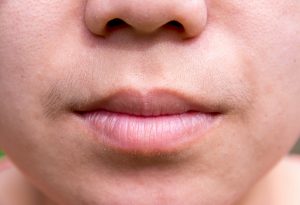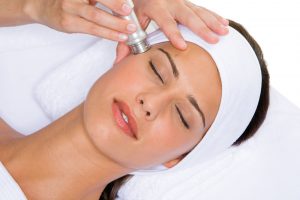Most women are unhappy with their appearance: someone with a figure, someone with a nose shape, breast size, thick and long hair, and almost every 10 women are worried about excess hair “in unnecessary places” (on the upper lip or chin, stomach, legs, etc. etc.). This feature of hair to grow “where it is not needed”, namely, in androgen-dependent places (areas of hair growth, where “male” hormones – testosterone and dihydrotestosterone act, is called Hirsutism. Hair, as a rule, grows dark, dense (stem).
Hirsutism can be constitutional – depending on the degree of hair growth in male relatives, but it can also be a consequence of hormonal changes. And what kind of hormonal abnormalities these are – of course, you need to sort out together with an endocrinologist or gynecologist-endocrinologist, take hormones (such as testosterone, dihydrotestterone, A4, DHA-S, 17-OH-progesterone, GSPS, TSH, prolactin and some others , according to indications).
Sometimes it is required to establish a connection between excess hair growth and PCOS (polycystic ovary syndrome), with diseases of the adrenal glands.
Depending on the established cause, hirsutism is also treated.
I will not dwell on medication methods, but will touch on the “local” removal, that is, epilation.
There are a lot of epilation methods:
photoepilation
laser epilation
shugaring (sugar hair removal)
elos epilation
electro-hair removal
waxing.
I will dwell briefly on each type.
Photoepilation. It is carried out using a light beam. Risk – if the skin is thin, then there may be redness (small burn), then it is necessary to reduce the intensity of the flash of the device. You can even make a test flash in 24 hours and see the reaction of the skin. After the procedure, use sedatives – for example, regular Panthenol, Traumeel-gel. With a tendency to scar formation – even Contractubex gel.
First, it is better to carry out photoepilation on a small area of the skin, and not on the face !!! in order to understand the risk of burns or scarring. In total, up to 12 procedures are used (individually). Conditions: do not sunbathe or use self-tanners for 1-2 weeks
(sometimes longer) after the procedure and do not shave off your hair 3-4 days before photoepilation, after, also use a cream with a high degree of skin protection 30-50.
Photoepilation has 2 subtypes – IPL and IHE, the second is not used for dark skin, on light skin it is very effective and less painful (+ additional thermal effect on the hair follicle).
N.B. 10/25/2014 Hurray! Finally, the “salon epilation” has an alternative – a compact epilator at “home” Lumea Comfort SC 1981, can be used on any part of the body and face! Powered by IPL technology. Clinical studies have shown significant hair reduction when using Philips Lumea only once a week, the recommended course is 6-8 treatments for the best effect. To maintain these results, simply repeat epilation every four to six weeks. Philips Lumea Comfort is equipped with five light pulse intensity settings for a gentle and effective treatment. Used to remove hair from all parts of the body, including legs, armpits, bikini area, abdomen, arms and face (upper lip, chin).
Laser epilation. It is quite effective (especially with point use, on the face), less painful than photoepilation. Recommendations before and after the procedure are the same as for photoepilation.
Not suitable for dark skin!
Shugaring. Hair removal with a special mixture (“sugar mixture”). The effect lasts 1 month, rarely ingrown hairs are formed. Used mainly for legs (not used on the face !!). After the procedure, the area to be treated must be wiped with a chlorhexidine solution. 3-4 days after – do not sunbathe. There may be slight skin irritation after the procedure. In general, it is quite safe.
Electrolysis. The name speaks for itself. Effective enough, but not safe. There are 3 subtypes of the procedure – thermolysis, electrolysis, blend method. Electrolysis is used more often. Contraindications for electric hair removal:
acute and chronic skin diseases;
decompensated stages of diabetes mellitus
varicose veins (at the place where electrolysis will be done, in 99% of cases it will be legs);
severe forms of hypertension and coronary heart disease;
infectious diseases;
tendency to form keloid and hyperplastic scars;
malignant neoplasms of the skin
intolerance to metal alloys that make up the needles;
dental pins;
pacemaker;
intrauterine devices (is a contraindication for electrolysis only in the bikini area);
implantation of gold threads
pregnancy
Electric epilation also has other modifications of the above methods: Flash thermolysis, sequence flash thermolysis, sequence blend epilation.
Waxing. Not used on the face !! Bikini area and legs. The disadvantage is ingrown hairs. To avoid them: once every 3 days after the procedure, use a skin peeling and apply a moisturizing cream (including against ingrown hairs). For example, Green Mama gel after depilation, La Roche Posay Cicaplast Baume B5 balm, Hair No More from Scin Doctors.
In addition, there is such a drug Vaniqa – a cream produced by the company Bristol-Myers Squibb (unfortunately it is not sold in Russia), which is applied to prevent hair growth (inhibits growth, but does not completely eliminate growth) after their removal, 1-2 once a day, the effect lasts up to 6-8 weeks.
The procedure is carried out once every 3 weeks.
Elos epilation. Combination of electro and photo epilation. New method. Negative points – this is a NON-SELECTIVE technology (there is no point effect, like laser epilation), which is not able to selectively affect the hair, is painful, and can lead to skin irritation. Like other photoepilation https://en.wikipedia.org/wiki/Hair_removal#Hair_removal_methods, it can only be used in combination “light skin – dark hair”. Sunburn before the procedure is contraindicated. After the procedure, sunbathing is also prohibited, in addition, you must use a sunscreen with a high protection factor.
In our center, hair removal is carried out by radio wave, only pointwise, on a small area of the skin.
The method of “dealing” with “unnecessary hairs” is always chosen individually, sometimes it is a combination of several types of hair removal, sometimes in combination with drug treatment (if it is an endocrine pathology).
“There is no limit to perfection!” … Only, please, think in advance about all the pros and cons of the planned procedures, an urgent need: D to carry them out. Observe the principle of prudence in the “struggle for beauty”! 😉
